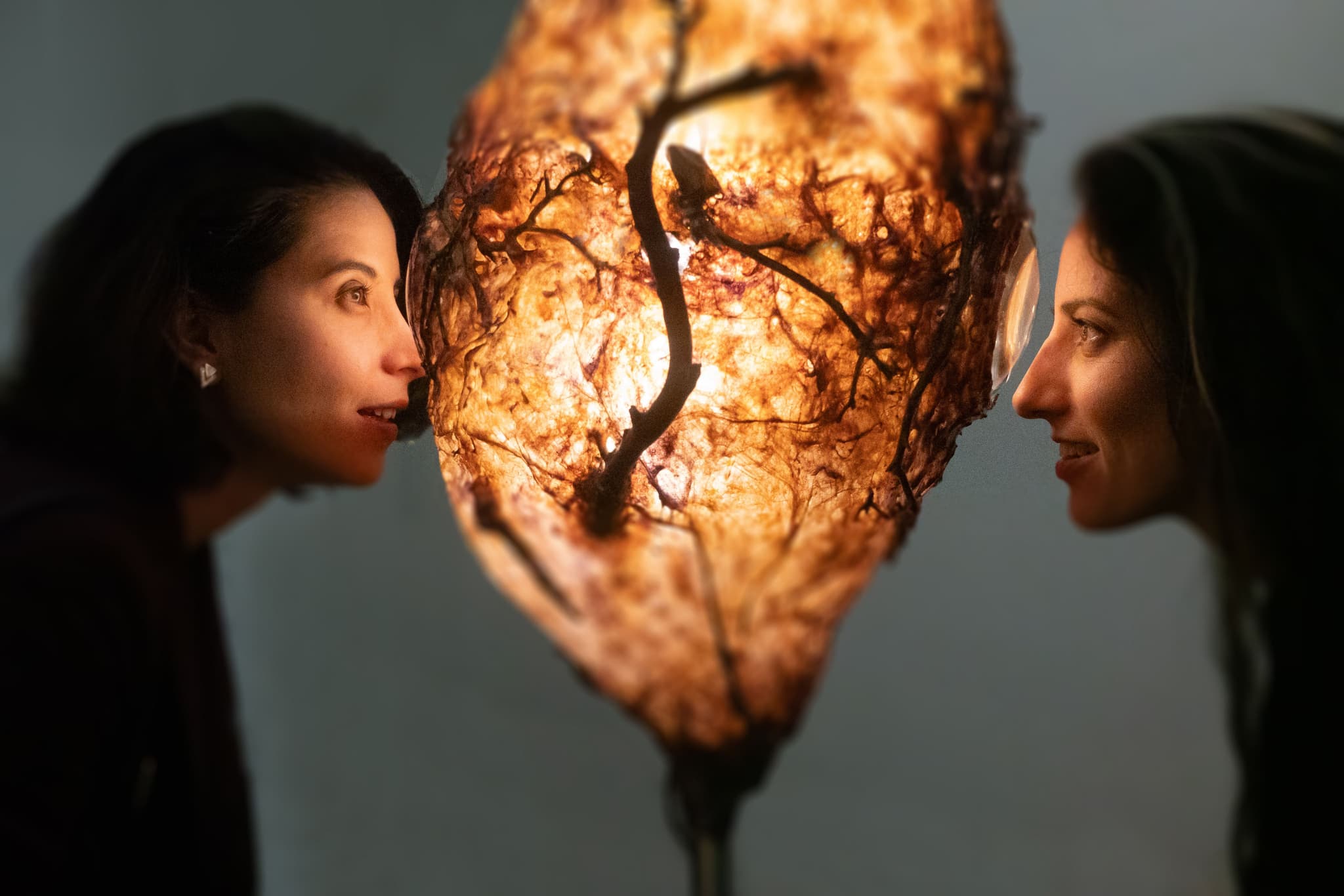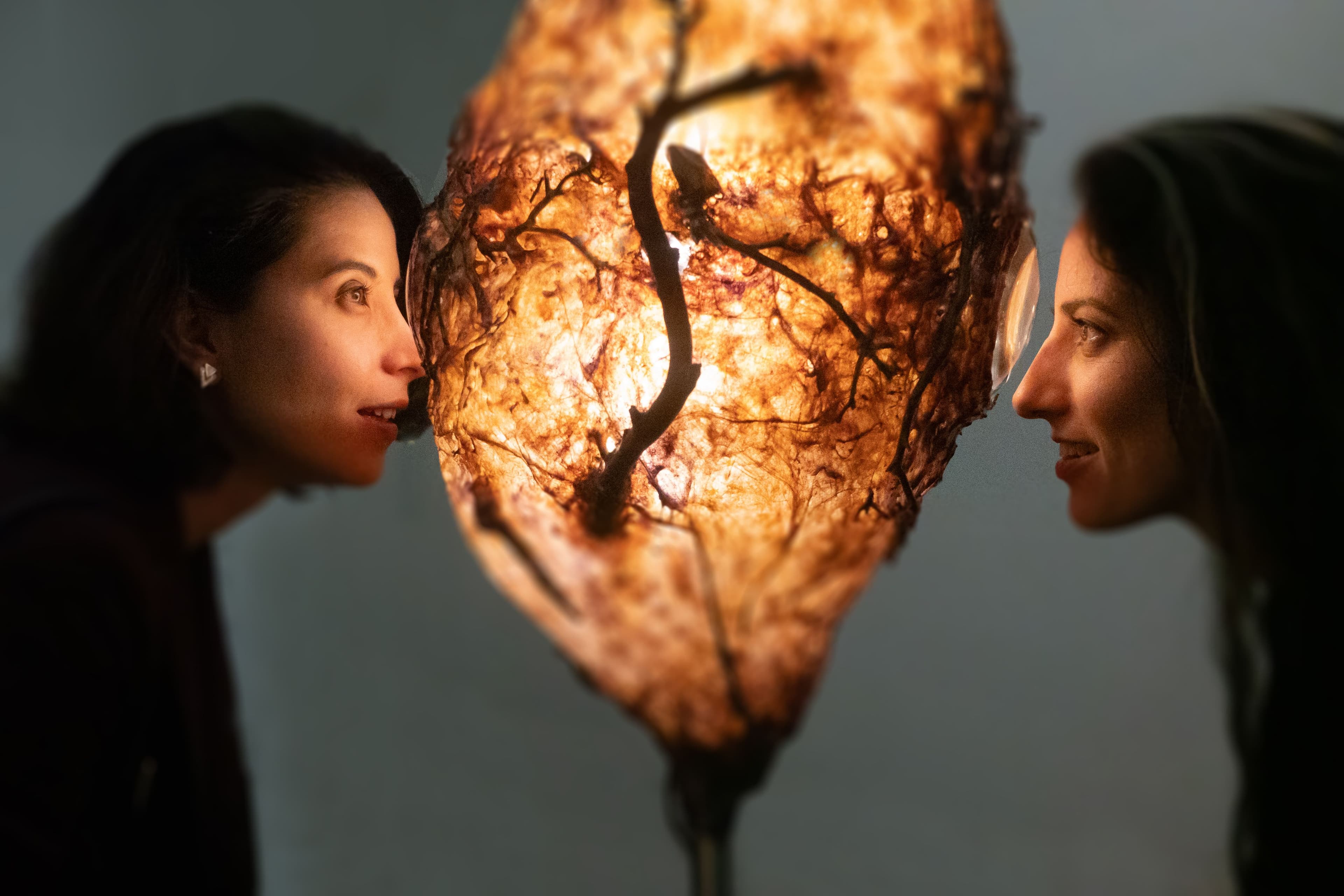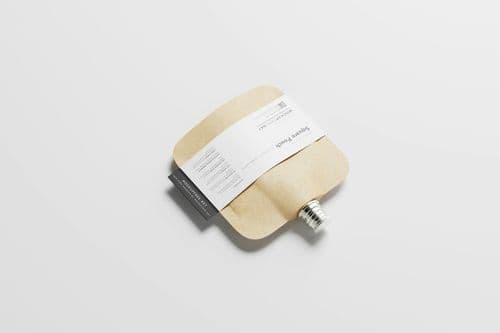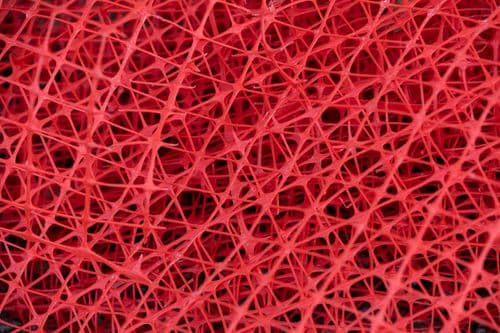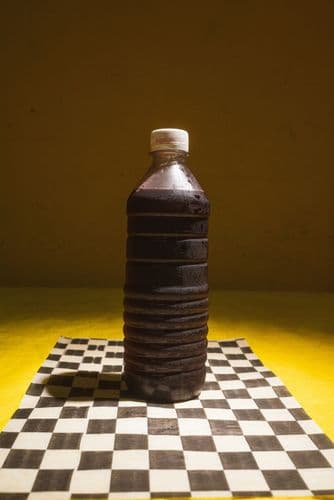Your algae- and collagen-based bioplastic requires balancing flexibility, strength, and biodegradability. What were the key technical challenges in formulating a material that remains both structurally stable and compostable over time?
A yoga teacher once told me that if you change one small thing, everything changes. At the time, I was looking for an ingredient that would improve the water resistance of my material without compromising its biodegradability. I experimented with adding different ingredients, as if I could simply introduce new elements without altering the whole. However, I soon learned that the real challenge was understanding the interactions between these new ingredients and my existing formula—the order in which they were combined, the temperatures, the pH levels—all of which could fundamentally alter the outcome.
At first, I thought that knowing the intrinsic properties of each ingredient would be enough. But my experiments showed that even seemingly small changes can have profound effects, much like the delicate dynamics of human relationships or the complexity of our individual universes. Science, chemistry, and physics are powerful tools, but their greatest value emerges when combined with intuition and experimentation—an approach deeply influenced by my background in art, design, and craft.
My journey took a significant turn when I encountered artists' laboratories during my bio-art experience, which led me from Argentina to the United States. It was there that I truly understood how interrelated layers of knowledge—both scientific and intuitive—can lead to innovative breakthroughs. So, you could say that the technical challenge is directly related to choosing the right approach to solving a problem. I select ingredients based on the technical needs of my formula. Do I need cohesion? Plasticity? Color retention? Then, I look for natural elements that can provide these qualities and begin studying the physicochemical reactions of their combination. How will they interact? What new properties will they acquire when combined?
It's easy to assume that using natural elements will automatically solve a problem. In reality, even harmless substances can interact in complex ways, sometimes creating toxicity or undermining biodegradability. I eliminated certain ingredients that could have improved water resistance because they would have negatively impacted compostability.
I value materials for their intrinsic qualities and unexpected applications. For example, I incorporate agar not only as part of a bioplastic formulation but also as a medium for growing microorganisms or mushrooms that I integrate into my artwork. This approach combines controlled laboratory protocols with a more liberated creative process, opening up exciting possibilities through the fusion of seemingly opposing methods.
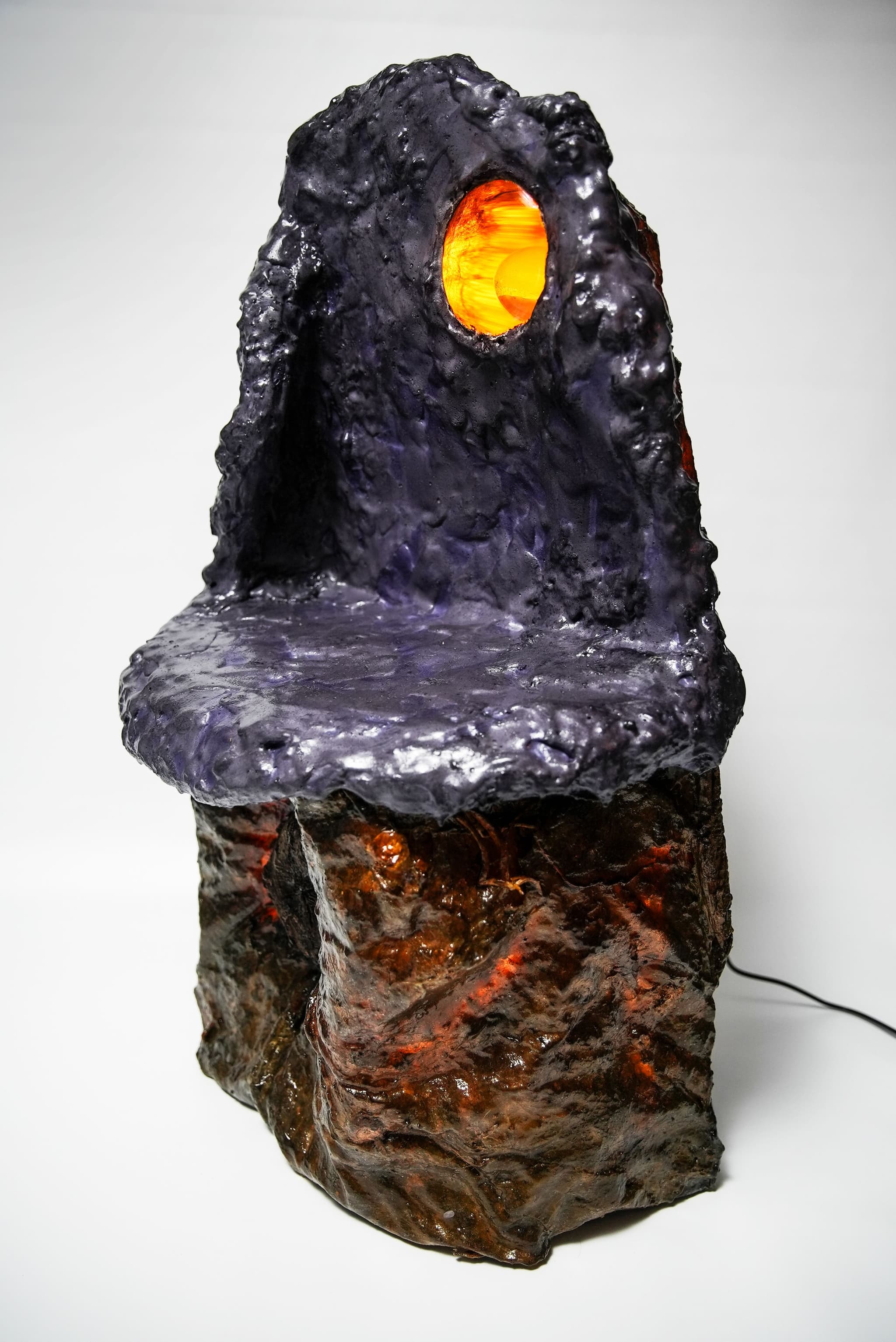
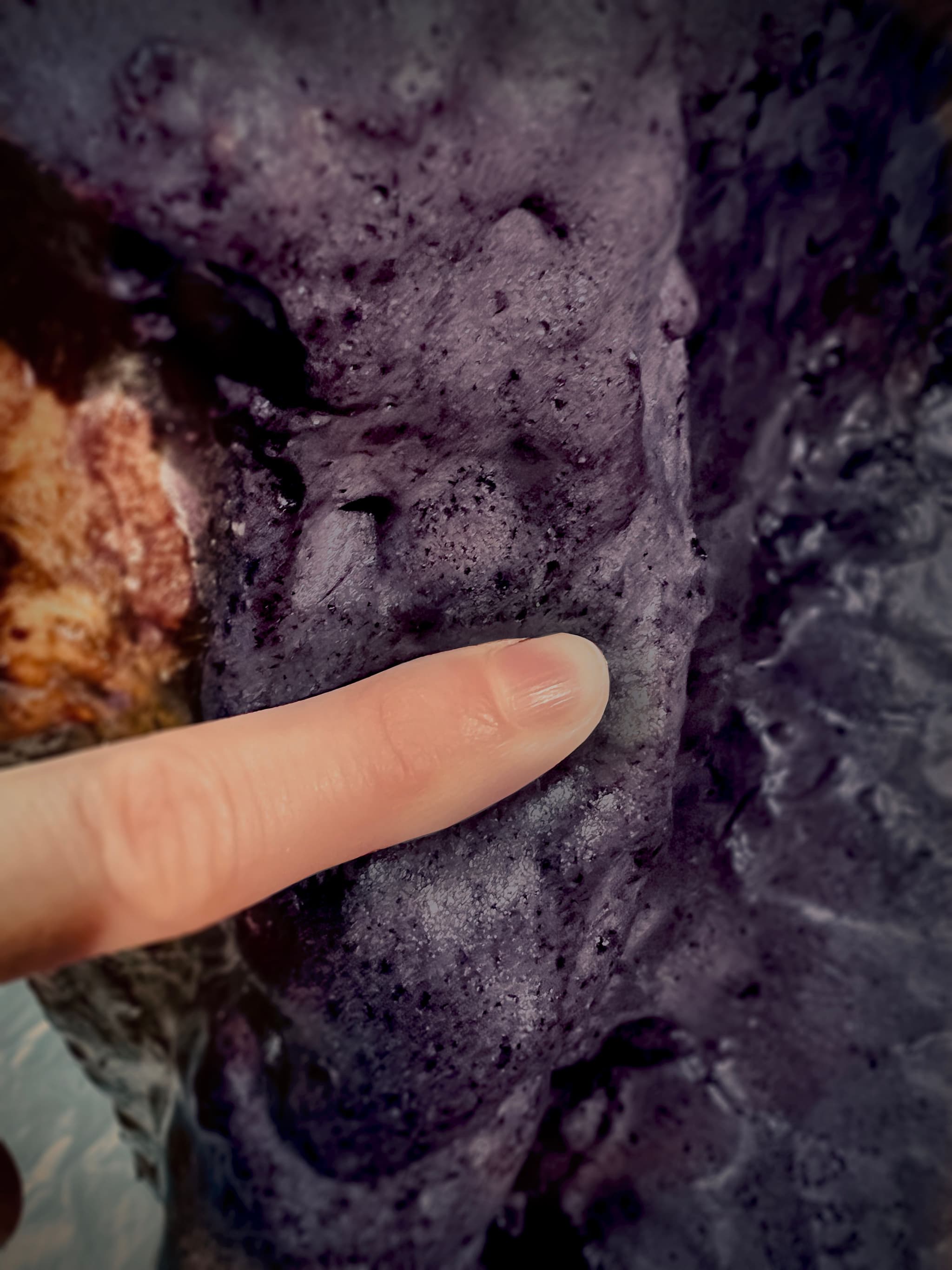
As you refine your bioplastic to be lighter, more resistant to humidity, and scalable, what potential industries or applications could you envision for this material beyond sculpture? How would you imagine its performance in functional design or manufacturing contexts?
Absolutely. In fact, I am currently designing seating and lighting pieces that are fully functional. They can be wiped clean with a damp cloth with no major risks, yet if left outdoors for a few weeks, they will biodegrade effortlessly in your garden.
Currently, my biomaterial has four different versions: a rigid bioplastic that looks like plastic, a flexible one that mimics rubber, a flexible biofoam that behaves like memory foam, and a rigid one that resembles the texture of polyurethane foam. Earlier this year, I was in London for the Material Matters fair—which I highly recommend for discovering new material proposals—and I had the opportunity to meet several people from the furniture and interior design industries who were interested in bioplastics and biofoams. I will be launching my brand very soon, and I am, of course, open to collaborations with architects and designers to start using my material in different projects. I am also interested in testing the material’s properties for applications beyond those I have explored so far, such as insulation or upholstery filling.
One of the challenges with biofoams currently on the market is that, due to the materials they are made from, they are extremely sensitive to moisture and prone to mold. After four years of research, I’m happy to say that my material is much less susceptible to mold and significantly more resistant to water. However, my development is still highly artisanal and small-scale, so I am excited by the idea of exploring what would happen if it were implemented at an industrial level. How could production be scaled while minimizing environmental impact?
I believe one of the biggest challenges to a more sustainable industry is figuring out how to make the transition with the least possible environmental cost. And this will likely require a paradigm shift—one that has already begun but is far from fully developed. Eco-feminist approaches suggest a more balanced and sustainable coexistence between humans and non-humans, and I feel that is the way forward. We need to redefine key concepts such as “durability,” “consumption,” and “sustainability” not only in technical terms but also from a philosophical perspective. What does it mean to consume? As my dear friend, artist, and professor Deville Cohen points out: What paradigms do we choose to sustain, and why? These questions should be asked with the same level of importance as the technical questions about the development of new materials in order to move forward in a more hopeful direction.
It is remarkable—the dichotomy between extreme consumerism, which allows us to change our mobile phones every year without hesitation, and the demand that expects bioplastics to behave exactly like plastic in terms of durability. I think this is an obsolete way of thinking about biomaterials. We wouldn’t think of leaving a piece of wooden furniture finished with Laccifer lacca shellac outside in the rain or under the sun; we understand that some materials and objects require more care than others. It is worth remembering that the indestructibility of plastic is what led us to the environmental crisis we face today. Changing the paradigm also means reevaluating which material properties should truly be prioritized.
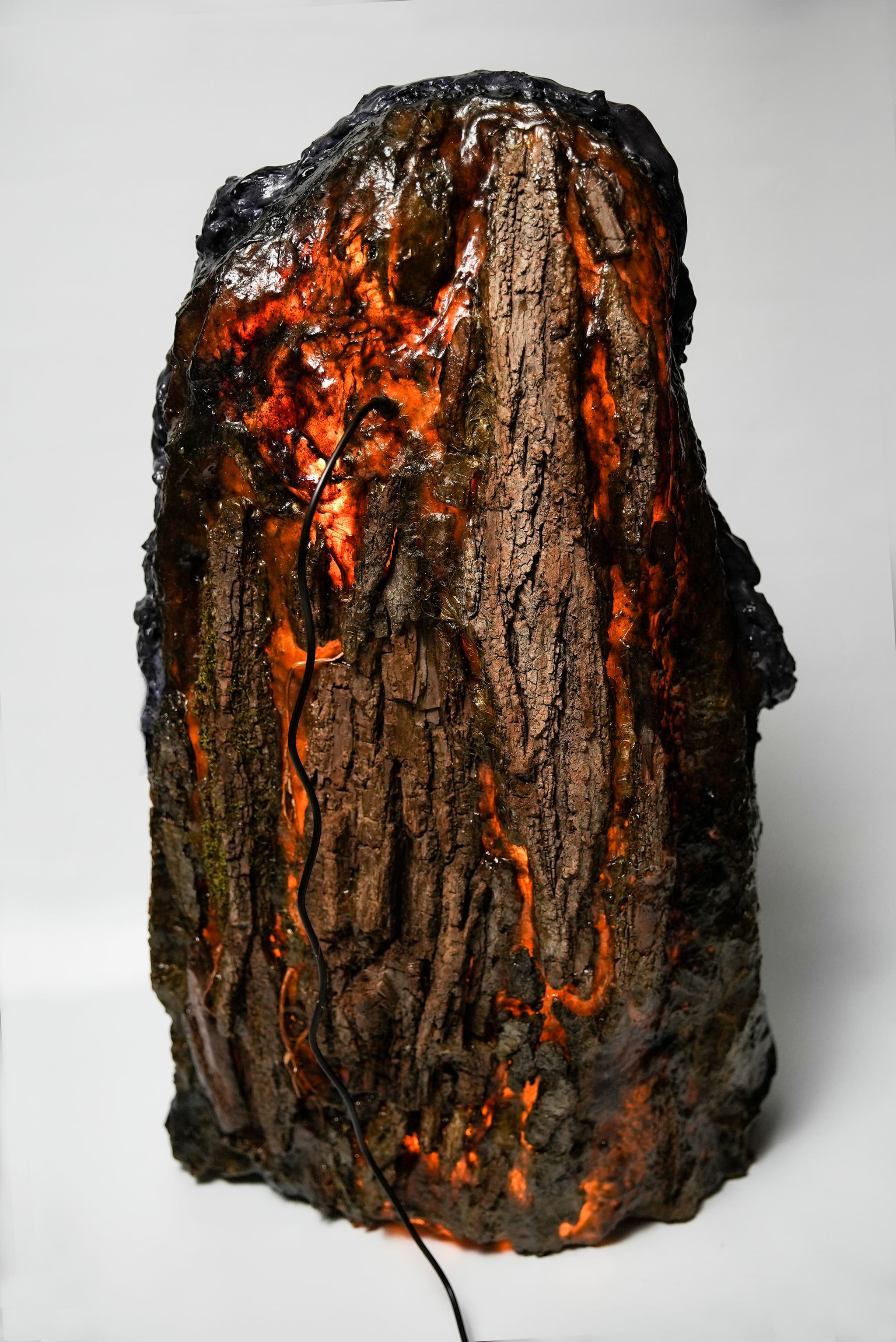
In your sculptures, you expose electronic sensors rather than concealing them. What does this reveal about the materiality of technology, and how does this approach change the way we perceive the relationship between organic and synthetic systems?
I feel that, as part of the paradigm shift, the relationship between the organic, the biological, and technology is being redefined. Technology permeates our daily lives—even our own bodies—yet we are not fully aware of it.
What I find risky is the attempt to make technology invisible. If we want to forge a better relationship with it, we need to expose and acknowledge it rather than hide behind naivety. There is no turning back; technology is already embedded in our reality.
It’s intriguing how many devices are designed to conceal their operating systems, transforming into opaque “black boxes” that distance themselves from the human experience—even as they mimic human traits to blend seamlessly into our lives. In my work, I often create strong juxtapositions between organic forms and digital technology, deliberately keeping all components exposed. I aim to demystify the artifice—inviting viewers to see that the “magic” behind a sensor’s response to movement or proximity, which activates my lighting sculptures, is not an intangible mystery but the result of a physical, material device. It’s like saying, “Yes, technology has a body too!”
There is also an inherent strangeness in combining cocoons and pupae—as I did in my Sympoietic series—with electronic circuitry. Yet I believe this reflects where we are as a species: mutating into a new way of being human that inevitably involves technology, from the simplest to the most complex. Far from romanticizing this process, I am committed to making it visible so that we can consciously engage with it rather than passively accept it. We are part of this transformation, and it is essential that we acknowledge it and actively shape its course.
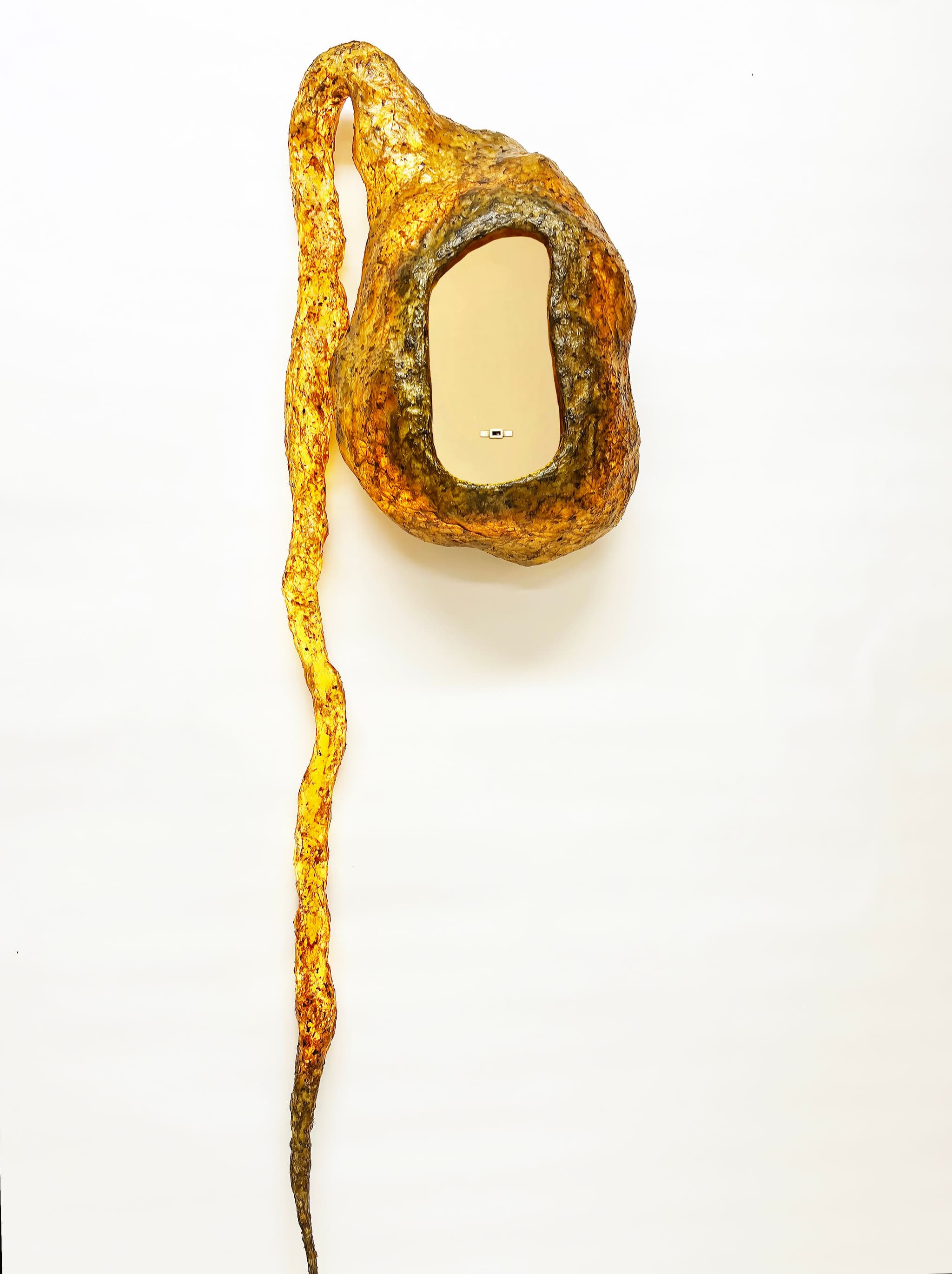
In DNA of Trees, you worked with genetic material from both trees and yourself. Beyond conceptual insights, did the process reveal any practical implications for working with biological data as a material?
Absolutely. In that project, I extracted DNA from trees and compared it to my own DNA at the Coalesce Center for Biological Art, directed by Paul Vanouse at the University at Buffalo. The process of extracting DNA from a leaf—the entire protocol that takes you from a living leaf to a digital sequence—was deeply moving. I was struck by how we can transform nature into digital data that we can manipulate to achieve various goals, and by the fact that this process can only be carried out by humans up to a certain point, after which machines take over. On one hand, it feels like playing God; on the other, it’s like handing over a key aspect of our existence to technology. This realization was both exhilarating and a little unsettling.
That project made me recognize the importance of a situated, holistic approach to the data we work with—and the inherent subjectivity in our interpretations. Scientific data is not as objective as it seems.
It also taught me to be more responsible about the environmental impact of my production. Vandana Shiva, an Indian scientist and eco-feminist activist, makes a powerful observation. After studying physics and specializing in nuclear energy, she returned home, only to be stumped by her sister—a doctor—when asked basic questions about radiation and the health and environmental impacts of nuclear technology. Shiva realized she couldn’t answer a single question. She reflected that in top institutions, you’re not taught about radiation—you’re taught about energy transitions and chain reactions. That’s when she understood that a science that only teaches how to modify nature, without considering the consequences of that modification on the larger world, is an incomplete science.
This insight was key for me in the Humans as Trees project. It highlighted how science often isolates subjects for study and, in doing so, loses sight of the whole—sometimes leading to so-called "advances" that ultimately harm the world around us. By thinking more broadly and contextually, I’ve come to understand that it’s not enough to simply use organic materials. You also have to rethink the molds, the electricity, and even the logistics of sourcing materials—because if you change one small thing, everything changes.
I also see engaging with and understanding natural materials as a way of staying connected to the physical world around me. It allows me to recognize cycles and patterns that we have somewhat lost in an environment dominated by virtuality, technology, and industry. In many ways, this disconnection is even more pronounced when we live in cities. For me, biomaterials research is fundamentally a choice about how I want to relate to and reshape the world in which I live.
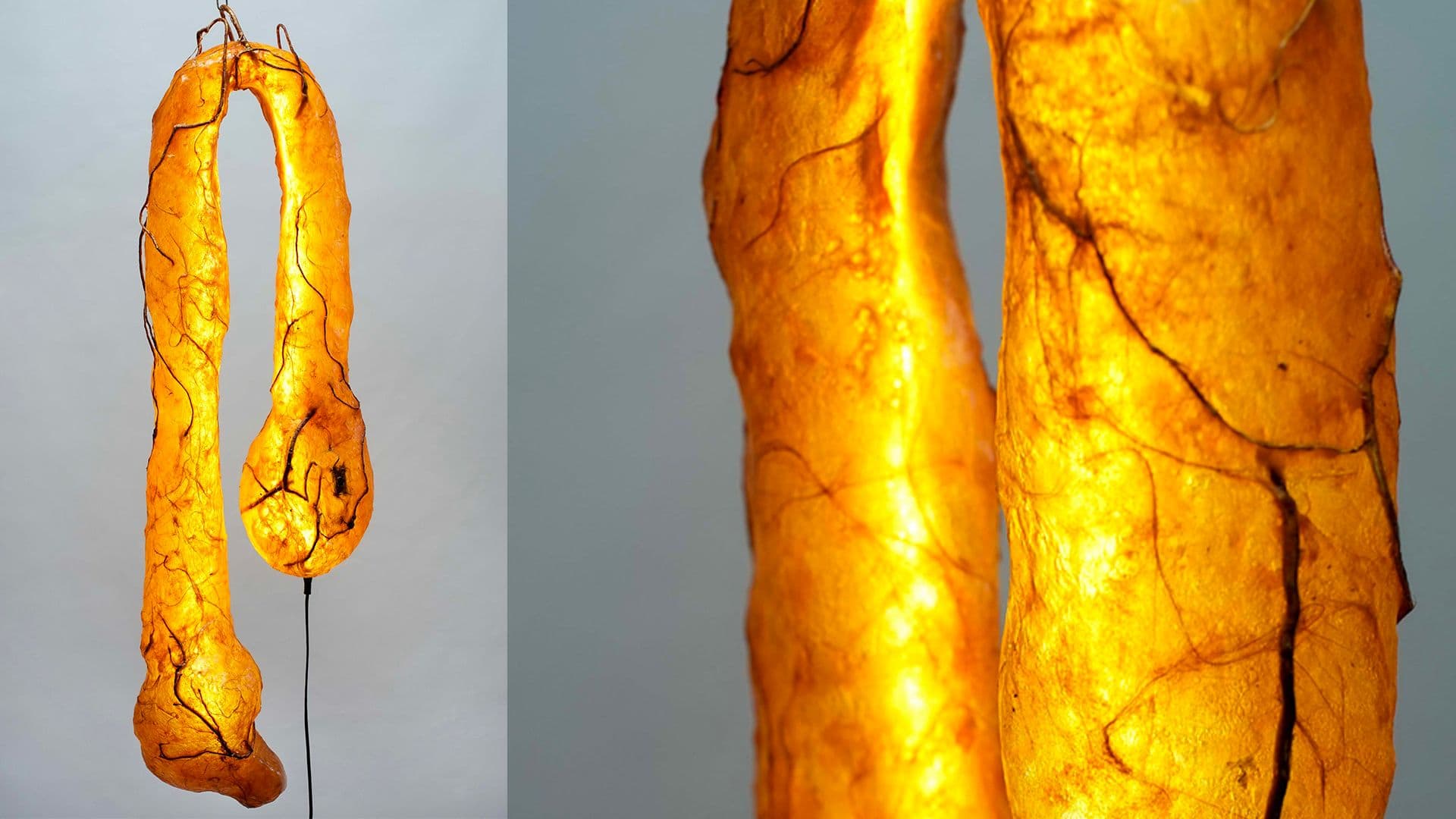
You use natural pigments like turmeric, blueberry, and beetroot in your bioplastics. How do these dyes interact with the material’s physical properties over time, and could you see potential for using your bio-based colorants in other applications?
There is a rich tradition of natural dyes and countless artisanal processes used to create bio-based colors—a field in which many artists and researchers are actively working today. Historically, ancient cultures such as those of Peru and Persia (to name just a few) used natural pigments for textiles, and this practice has remained constant throughout art history, particularly during periods when artisans produced their own materials.
Many modern artists, accustomed to buying industrially produced materials, have lost a deeper understanding of what they are using, including aspects such as toxicity and composition. I spend a great deal of time reading old manuals and historical recipes for paints and materials, which has significantly influenced my current formulations.
When working with bio-based colors, key considerations include maintaining the right pigment ratios to preserve the core properties of the material, selecting appropriate preservatives, and controlling the pH level, which affects the durability of the color over time. With natural dyes, color shifts are inevitable—whether between batches, due to exposure to light, or through regular use. This inherent variability, common in traditional techniques that lack industrial stabilization, is precisely what makes them unique and compelling. It is a fundamental aspect of my artistic statement and one of the foundations of my ongoing research.

With advancements in synthetic biology and AI-driven material research, what emerging technologies do you find most promising for biomaterial innovation? How do you see these shaping the future of bio-art and material design?
Gene-editing tools like CRISPR can help overcome the limitations of certain bioplastics, enabling the development of improved versions and significantly impacting the mass production of harmful synthetic plastics. That said, I believe that both artificial intelligence and synthetic biology are incredibly powerful tools—which also means they are far from neutral. They should assist us in thinking and making better decisions, but they must not decide for us.
These technologies are already here. While they offer many potential advancements, they also require contextualization and a broader perspective that considers both their benefits and risks—not only from a technical standpoint but also from a human one. The limitations we face today are no longer purely technological; they are ethical as well.
